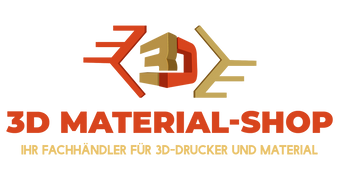What is bed leveling in 3D printing?
We would like to give all 3D printing beginners a brief insight into this topic and explain the process of bed leveling. We will also give you a short and compact guide for manually leveling the print bed of your 3D printer.
3D printing and print bed leveling (alignment) :
3D printing is one of the most exciting technologies today . It allows people to create complex objects that they could not have imagined before . An important part of 3D printing is leveling the print bed . This process ensures that the print bed is level and that the print objects are placed on the bed in an orderly manner .
There are two ways to level the print bed : manual and automatic .
Automatic leveling
Automatic leveling is a technology that allows the 3D printer to automatically level the print bed . This process is carried out by a special sensor that scans the print bed and measures the height of each point . The sensor then sends the data to the 3D printer , which adjusts the height of the print bed to maintain a level surface .
ADVANTAGES OF AUTOMATIC LEVELING
The biggest advantage of automatic leveling is the time saved . Since the process is done automatically , you do n't have to go to the trouble of leveling the print bed manually . It is also very precise since the sensor measures the height of each point and the 3D printer adjusts the height of the print bed .
Disadvantages of automatic leveling
The biggest disadvantage of automatic leveling is that it is expensive . Since the sensor and the 3D printer require special components to perform the process , it is an expensive technology . It is also not available for all 3D printers because not all 3D printers have the required hardware .
Man ue ll it level ing
Manual leveling is the traditional way to level the print bed . This process requires you to manually adjust the print bed by adjusting the height of individual points . This can be done using a screwdriver or a special leveling tool .
Advantages of manual leveling
The biggest advantage of manual leveling is that it is cost - effective . Since you do n't need any special components to perform the process , it is a cost - effective option . It is also available for all 3D printers since you only need one simple tool .
Disadvantages of manual leveling
The biggest disadvantage of manual leveling is the time it takes . Since you have to adjust the print bed manually , it may take some time to complete the process . It is also not as precise as automatic leveling since you can only roughly adjust the height of the individual points .
Instructions for manual print bed leveling:
1. Make sure the 3D printer is turned on and the print bed is heated to the correct temperature.
2. Remove any objects from the print bed.
3. Locate the leveling screws, usually located at the four corners of the print bed.
4. Use a screwdriver to slightly tighten the screws.
5. Place a sheet of paper on the print bed and move it slightly back and forth.
6. If you hear a crackling sound, it means that the paper is stuck between the pressure plate and the screw.
7. Turn the screw either clockwise or counterclockwise until the paper moves freely.
8. Repeat this process at all four corners of the print bed until the paper moves evenly everywhere.
9. When you are finished, check the leveling of the print bed by printing a test piece.
10. If the test piece does not adhere properly to the print bed, repeat the leveling steps until the test piece adheres properly.
Conclusion
Automatic leveling and manual leveling are both good options for leveling the print bed . Automatic leveling is very precise and saves time , but is expensive . Manual leveling is inexpensive and available for all 3D printers , but is time - consuming and not as precise . Choose the option that best suits your needs .
You have purchased a 3D printer from us and are having difficulties with the print bed leveling (autobed or manual leveling) of your 3D printer?
We give tips, write us a short message by e-mail to info@3dmaterial-shop.de , or by phone at: +49 (0) 69 - 678 382 24.


![Polymaker PolyTerra PLA Dual 1,75mm 1kg - [3D Material-Shop]](http://3dmaterial-shop.de/cdn/shop/files/PolyTerra-Dual-PLA_1-75mm_1kg_Foggy-Purple-Purple_600x600_d536672b-71f5-4400-a9af-a045bd9a226d.jpg?v=1700312155&width=176)